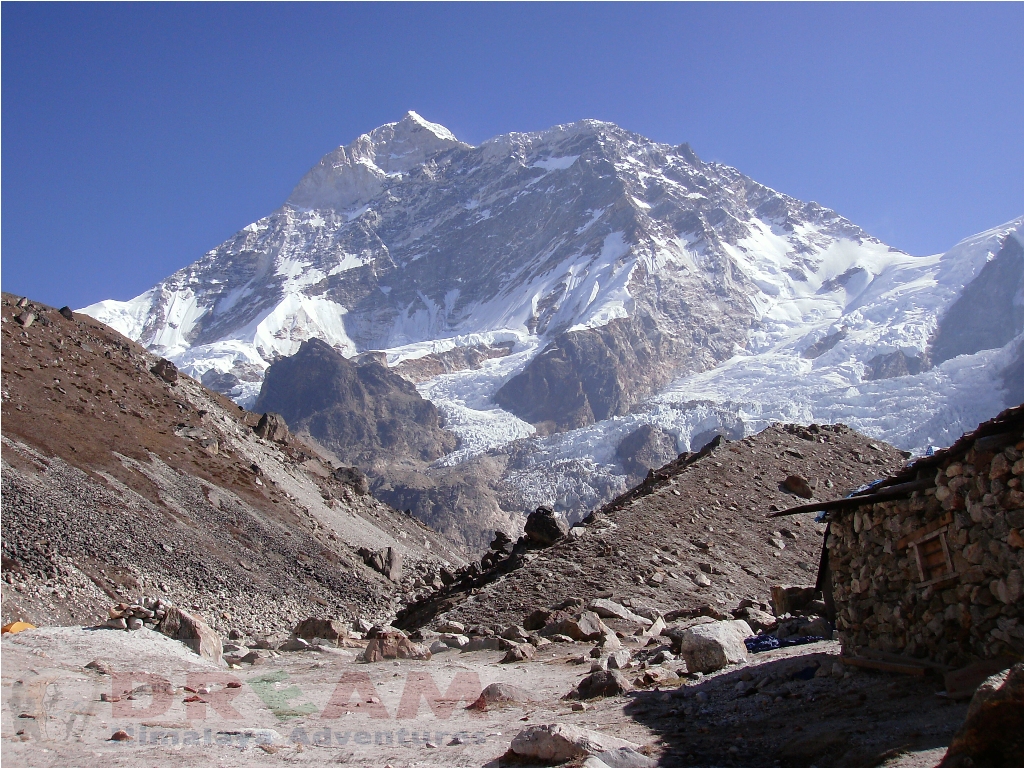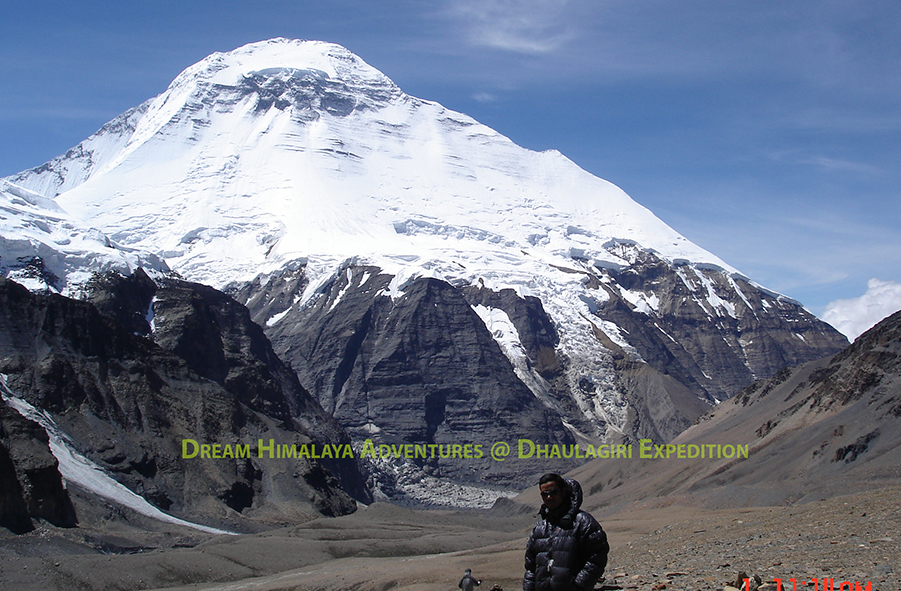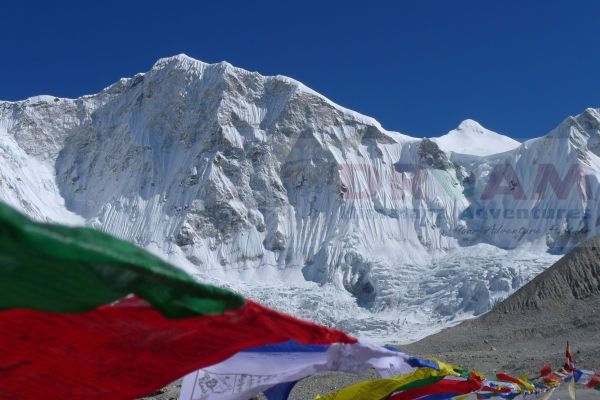Mt. Everest Expedition South Col (8848m) - Brief Introduction
Mt. Everest, rising 8,848m (29,028ft) above sea level is the highest mountain on Earth. For decades summiting Everest has been considered one of the greatest mountaineering achievements. In the spring of each year, we embrace this intense challenge by taking a group of qualified climbers to Nepal and Tibet to climb Mt. Everest via the South Col and North Col route respectively. Mt. Everest Expedition South Col was the first successfully climbed route on Mt. Everest by Sir Edmund Hillary and Tenzing Norgay Sherpa, accomplished this feat on May 29th, 1953. Since then, a few thousand climbers stand on the summit of Mt. Everest. It’s the most climbed and the high possibility of success route on the mountain.
Dream Himalaya Adventures has been running successful Himalayan expeditions to the Himalayas of Nepal & Tibet. We support full board expedition services up to the summit and to the advance base camp as well. We are committed to providing you with the best quality services and experience to help you reach your goal. However, all the climbing members must have considerable climbing experience at higher altitudes, preferably in the Himalayas.
Our Sherpas are highly qualified, experienced and multiple times Everest summiteers and they have a high reputation with excellent success rates with the safety of the client as number one priority. All members will be assisted by our well-experienced Sherpas at the ratio of 1:1 and there will be a manager at base camp to assist the team and also act as a liaison between climbers and the Sherpas.
Climbing Routes & High Camps
After final preparations in Kathmandu, we'll fly to Lukla and begins our 7 days teahouse trek in the Khumbu Valley to Everest base camp. We will ascend the peak via normal route (South East route), establish our base camp at ~5300m at the foot of the notorious Khumbu Icefall before making our way to Camp-1 at 6,000m. We'll climb to Camp-2 at 6,400m smack in the middle of the Western Cwm, up to the Lhotse face to Camp-3 at 7200m. Finally, we'll head up the South Col to Camp-4 at ~8000m before making our summit push.
Camp I – 5,945 meters
After the Khumbu Icefall, the climbers arrive at Camp I, which is located at 19,500 feet. Depending on the type of expedition, Camp I will either be stocked by the climbers as they ascend and descend the Icefall or by Sherpas in advance.
The area between Camp I and Camp II is known as the Western Cwm. As the climbers reach Camp II at 21,000ft, they may be temporarily out of sight of their support at Base camp. Nonetheless, modern communication devices permit parties to stay in contact.
Camp II – 6,402 meters
As the climbers leave Camp II, they travel towards the Lhotse face (Lhotse is a 27,920ft mountain bordering Everest). The Lhotse face is a steep, shiny icy wall. Though not technically extremely difficult, one miss-step or slip could mean a climber's life. Indeed, many climbers have lost their lives through such mishaps.
Camp III - 23,500 feet (7,164 meters)
To reach Camp III, climbers must negotiate the Lhotse Face. Climbing a sheer wall of ice demands skill, strength and stamina. It is so steep and treacherous that many Sherpas move directly from Camp II to Camp IV on the South Col, refusing to stay on the Lhotse Face.
Camp IV - 26,300 feet (8000 meters)
As you’re leaving C4, it’s a little bit of a downslope with the uphill side to the left. There is typically snow on the ledges to walk down on, interspersed with rock, along with some fixed rope. The problem with the rope is that the anchors are bad, and there’s not much holding the rope and a fall could be serious. Fortunately, it’s not too steep, but there is a ton of exposure and people are usually tired when walking down from camp. The rock is a little down sloping to the right as well, and with crampons on, it can be a bit tricky with any kind of wind. There’s a little short slope on reliable snow which leads to the top of the Geneva Spur, and the wind pressure gradient across the spur can increase there as you’re getting set up for the rappel. Wearing an oxygen mask here can create some footing issues during the rappel because it’s impossible to see over the mask and down to the feet. For that reason, some people choose to leave Camp 4 without gas, as it’s easier to keep moving down the Spur when it’s important to see all the small rock steps and where the old feet are going. Navigating down through all of the spaghetti of fixed ropes is a bit of a challenge, especially with mush for brains at that point. One lands on some lower ledges, which aren’t so steep, where fixed ropes through here are solid. At this point, it’s just a matter of staying upright, and usually, the wind has died significantly after dropping off the Spur. The route turns hard to the left onto the snowfield that leads to the top of the Yellow Bands.
Camp IV, which is at 26,300ft on the South Col, is typically the climbers' first overnight stay in the Death Zone. The Death Zone is above 26,000 feet. Though there is nothing magical about that altitude, it is at this altitude that most human bodies lose all ability to acclimate. Accordingly, the body slowly begins to deteriorate and die - thus, the name "Death Zone." The longer a climber stays at this altitude, the more likely illness (HACE - high altitude cerebral edema - or HAPE - high altitude pulmonary edema) or death will occur. Most climbers will use oxygen to climb and sleep at this altitude and above. Generally, Sherpas refuse to sleep on the Lhotse face and will travel to either Camp II or Camp IV.
Camp IV is located at 26,300 feet. This is the final major camp for the summit push. It is at this point that the climbers make their final preparations. It is also a haven for worn-out climbers on their exhausting descent from summit attempts (both successful and not). Sherpas or other climbers will often wait here with supplies and hot tea for returning climbers.
From Camp IV, climbers will push through the Balcony, at 27,500 feet, to the Hillary Step at 28,800 feet. The Hillary Step, an over 70 feet rock step is named after Sir. Edmond Hillary, who in 1953 along with Tenzing Norgay Sherpa, became the first people to summit Everest. The Hillary Step, which is climbed with fixed ropes often, becomes a bottleneck as only one climber can climb at a time. Though, the Hillary Step would not be difficult at sea level for experienced climbers.
TRIP HIGHTLIGHTS
- Most experienced Chef at base camp and his crew
- Regular weather forecast information
- WIFI at base camp on pay basis
- Fully medical back up and smooth communication system on the mountain
- Enough Oxygen system will be stocked for any emergency purpose
- Personal 10x7 feet Box Tent to each climber at base camp
- Excellent logistic set up at base camp with carpeted along with heated dining tent.
- World’s best Climbing Sherpa guide to each climber
- Climb the world’s highest peak, Mt. Everest with already summitted Sherpa Guides
- Climb Lobuche East Peak (6119m) for acclimatization purpose
DETAILS ITINERARY
Day 1
Arrival in KTM, transfer to hotel& briefing
After you arrive at Tribhuvan International Airport in Kathmandu, you will have to go through custom formalities. You will be greeted by our representative who will be anxiously waiting for you with a placard displaying your name in his hand. You will be transferred to the 3-Star category hotel in a private vehicle. Once you get refreshed, you will get briefing regarding the itinerary and you will also be introduced with your crewmembers and other trekkers who are going to join you on the trip. Enjoy welcome dinner in the evening where you can taste authentic Nepali dinner. Stay overnight in a hotel.
Day 2
Half day sightseeing and afternoon equipment checking and fitting
In the morning after breakfast, we will organize half day sightseeing tour during which you will be taken on memorable UNESCO Heritage Tour. Tour begins with visit to Nepal’s holiest Pashupatinath Temple Complex and takes us through Nepal’s largest Bouddhanath Stupa and 2500 years old Swoyambhunath Stupa. We will return to hotel in the afternoon and time for shopping of any missing items, equipment checking and getting ready for the trip.
Day 3
Kathmandu; final preparation and packing
This is the preparation day. Expedition is a long and challenging activity. We need to get well prepared and equip ourselves with all necessary equipment and accessories for successful and enjoyable expedition.
Day 4
Fly to Lukla (2840m) - 30min, trek to Phakding (2,610m) - 3hrs
We will drive to domestic terminal of Tribhuvan Airport early in the morning and catch a flight from Kathmandu to Lukla. We will follow one of the most scenic air routes in the world with panoramic views of glistening mountains to Tenzing Hillary Airport in Lukla. Lukla allows access to Everest Khumbu region. We will assemble the crew and take breakfast before start of Mount Everest Expedition. Following the stone path through Ghat village, we will reach Phakding village. Visit local monastery. Stay overnight in Phakding.
Day 5
Trek to Namche Bazar (3,440m) - 5hrs, visit to museum
Leaving Phakding, we will walk along Dudhkoshi River and enter the dense pine forest. We will cross suspension bridges and walk through dispersed houses of Zapute, Benkar and Chumoa to reach Monjo. Monjo allows an entrance to Sagarmatha National Park. We need to go through required national park formalities before we can enter the park. The park is rich in Himalayan herbs, plants, mammals and birds. We will descend to Hillary Bridge existing at the base of hill. After crossing the bridge, we will follow the escalating path towards Namche Bazaar. The path rewards us with views of Thamserku Mountain, Everest, Lhotse and other mountains and peaks. We will visit Sherpa Culture Museum in Namche where we can observe Himalayan lifestyle and cultural artefacts. Stay overnight in Namche Bazaar.
Day 6
Day hikes - Khumjung / Khunde (3840m) - 5hrs
Namche Bazaar acts as the major trade centre to conduct trade in between locals and neighbouring Tibetans. Namche is also popular as the capital of Sherpa land. It is wise to take rest at Namche on this day. For proper acclimatization with the changing altitude, we can arrange day hike to small Khumjung and Khunde villages. Visit the local monastery and observe the local lifestyle. Head office of National Park, Museum and monasteries are interesting places near Namche. We can get most of the modern facilities including hospital and post office at Namche. Stay overnight in Namche.
Day 7
Trek tp Tengboche (3,860m) - 5hrs, visit monastery
The trail continues along glaciated DudhKoshi River from Namche. We will follow the scenic route with views of Everest, Nuptse, Lhotse and other peaks and mountains and enter the forest area. Walking through the colourful rhododendron forest, we can get opportunity to view musk deer and colourful Himalayn birds like Danphe and Munal. We will move further to Sanasa village. The trail branches at Sanasa. We will follow the main trail towards Everest Base Camp. Following the escalating path from Sanasa, we will reach Tengboche. Gate of Tengboche Monastery is open after 3pm. We will visit Tengboche Monastery which is the largest monastery in the region.
Day 8
Trek Dengboche (4,410m) - 5hrs, in the Chhukung Valley
Leaving Tengboche, we will enter the birch and rhododendron forest. In couple of hours, we will reach Debuche from where we will lower down to beautiful Chhukung Valley. We will descend to Imja River and follow the raised path to Pangboche. Monastery is Pangboche is believed to be the oldest Monastery in the region. Walking along the Mani walls, we will climb to Pheriche. Walking along Lobuche River, we will reach Dengboche village. Stay overnight in Dengboche.
Day 9
Day hikes to Nagarjun Peak (5,100m) - 5hrs
Taking rest from trek at Dengboche helps to break the stress. It also helps in proper acclimatization. We will take short walk to Nagarjuna View Point located at Nagarjuna Peak. Enjoy the 360 degree mountain views of Makalu, Lhotse, Amadablam, Island Peak and other mountains. We will return to Dengboche for staying overnight.
Day 10
Trek to Lobuche (4,910m) - 4hrs
From Dengboche, we will return to Pheriche. The trail continues through Dugla to the steep moraine of Khumbu glacier. We will head towards ChupkiLhara which is the memorial site for renowned climber BabuChhiri Sherpa. ChupkiLhara is decorated with prayer flags. Walking through the Khumbu glacier moraine, we will reach Lobuche. Enjoy the panoramic views of Pumori Peak, Khumbutse Peak and other peaks and mountains. Stay overnight in Lobuche.
Day 11
Trek to Everest Base Camp (5364m) - 6hrs
From Lobuche, we will follow short and easy path to Gorakshep, Lunch there and continue trek to Everest Base Camp the same day, the trail stretches through levelled path from Gorakshep to the Indian army mountaineers' memorials. Although levelled, the path is tricky as it is made slippery by the glaciers. Also, the challenges is added by the increased altitude and presence of thin air. Walking past the rocky dunes and moraines, we will reach Everest Base Camp. We will enjoy the views of Nuptse, Khumbutse and other peaks and mountains. Stay overnight at Everest Base Camp on our won CAMP.
Day 12-30
Acclimatization climb to Lobuche East Peak (6,119m), load ferries / route opening etc.
After spending few days at Base Camp and doing some acclimatization hiking around, then we will do light packed and go for climbing the Lobuche East (6,119m) peak and possible spent over night at around 6000m altitude to be more acclimatized and fit for the 6000m altitude then we return back to Base Camp. We will spend these days in proper acclimatizationup to Camp III. We can scout the surrounding area while Sherpas fix cables and ladders in the Everest climbing route wherever necessary and the load will be transferred to high camps. We do 1st rotation to Camp II possible straight to Camp II without spending night at Camp I, or may be slending overnight at Camp I (depends on how every one feels), after spending one or two nights at Camp II, depending on climbers fitness level at 6000m altitude, either we will climb to Camp III for final acclimatization trip or we may descend to Base Camp. Now Sherpas do few load ferries to Camp II and also to Camp III, after spending few relaxing days/nights at Base Camp, now we may go for 2nd rotation up to Camp III (if we won't completed Camp III rotation on our 1st rotation/trip) and we return down to Base Camp and do further planning and discussions for summit push and more.
Day 31-38
Trek out and rest at the lower villages, Namche / Debouche
These are preparation days. Frequent ascend and descend of higher camps will be made in order to properly acclimatize ourselves to the increasing altitude. We will trek down to Debuchevillage at the lower altitude for the better feeding and sleeping
Day 39-52
Climbing up to camp IV, Summit Mt. Everest (8,848.86m)
Base Camp to Camp I(5945m)and continue to Camp II (6402m) 8 to 10 hours
We will prepare for climbing Everest early in the morning. We will choose the southeast route and walk through moraines and climb 60degree slopes to reach Camp1 which is locatedjust above the Khumbu icefall. Leaving Camp I, we will progress through Western Cwm to Camp II.
Camp II to Camp III (7164m)
From Camp II, we will head towards Lhotse face. It takes about 6/7 hours to reach at Camp III from II; we sleep at Camp III on Oxygen on low pressure.
Camp III to Camp IV (8000m)
Leaving Camp III, we will move to Camp IV that is located at South Col. We will climb the slope with help of fixed rope and crampon. We climb from Camp III onwards with Oxygen. Normally it takes about 6 to 8 hours to reach at Camp IV.
Camp IV to summit (8848.86m)
This is the last camp before we reach summit. We will make final preparation for climbing to the summit at this camp. Double-checking with the weather forecast, if low wind pressure, we normally start from Camp IV for the final summit push about 7/8 pm. Climbing Hillary Step at 28,800ft, we will try to reach on the summit early in the morning. We will enjoy the breath-taking views of surrounding peaks, mountains and valley from summit andafter taking
some pictures/videos andwe start lower down to the South Col for the overnight. The next day we climb down to Camp II and the following day to Base Camp.
Day 53-54
Return to Base camp
We will clear the base camp and celebrate successful climb of Everest, preparation for return journey to the town.
Day 55
Trek to Pheriche - 6hrs
Early in the morning, we will leave Base Camp of Everest and follow the descending trail to Lobuche. Walking past Lobuche, we will descend to Pheriche village. This is a small Sherpa village located below Lobuche Mountain. We will visit ancient PhericheMonastery.Stay overnight at Pheriche.
Day 56
Trek to Namche - 5hrs
After following the easy descending trail through rhododendron forest to Dudhkoshi River, we will walk past tapered gorges and once again follow the trail through forest area that is rich in Himalayan wildlife. Once we arrive at Sanasa, we will enjoy the view of Amadablam Mountain. Walking through the forested edge beyond Kyangjuma, we will reach Namche. Enjoy the views of Everest, Tengboche and other peaks and mountains. Stay overnight at Namche.
Day 57
Trek to Lukla - 6hrs
From Namche, we will lower down to rhododendron forest and walk along Dudhkoshi River to Phakding. Walking past the walled road of Ghat, we will reach Lukla. Stay overnight in Lukla.
Day 58
Fly back to Kathmandu, transfer to Hotel
We will catch an early morning flight from Lukla to Kathmandu. This is rest day. Spend the day as you like. You can go for shopping in Thamel where you can buy souvenir items. We can also arrange for guided sightseeing tour. Alternatively, you can arrange your photo albums and jot down memories in your journal. Stay overnight in a hotel in Kathmandu.
Day 59
Free day in Kathmandu
Spend the day as you like. You can go for shopping in Thamel where you can buy souvenir items. We can also arrange for guided sightseeing tour. Alternatively, you can arrange your photo albums and jot down memories in your journal.
Day 60
Transfer to airport and fly back to HOME
You will be transferred to the Airport as per your schedule flight for international departure. Safe journey. We hope to see you soon.

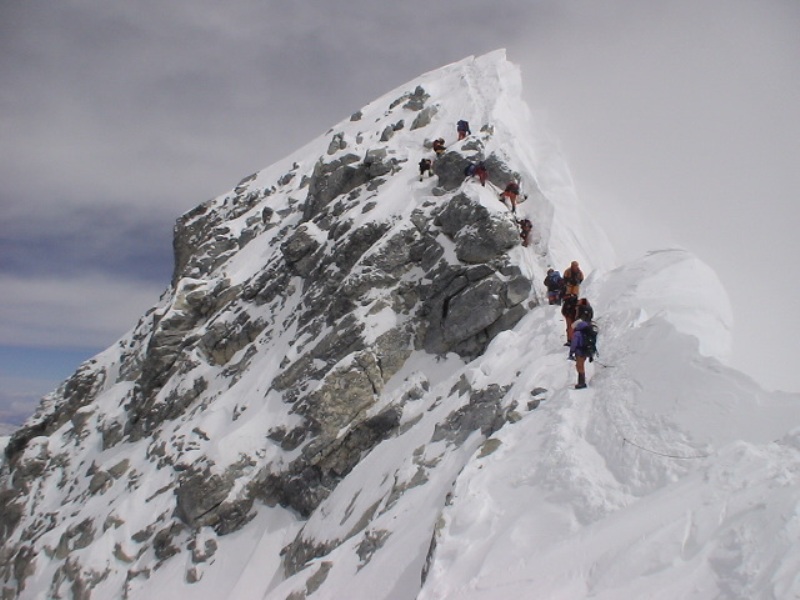



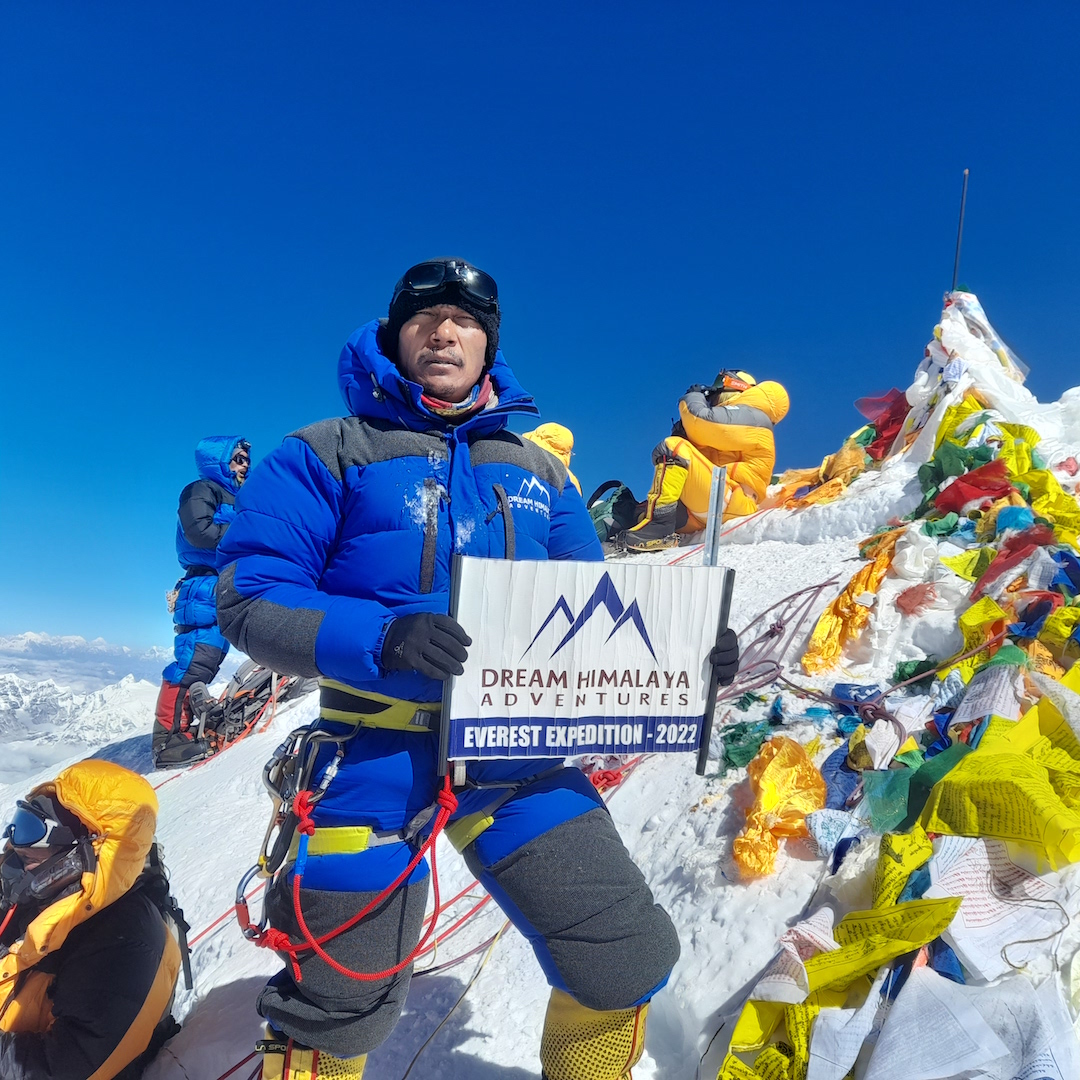







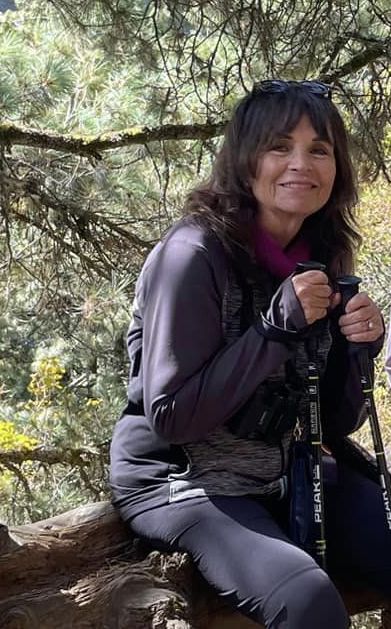








 Download Gear Check List
Download Gear Check List





